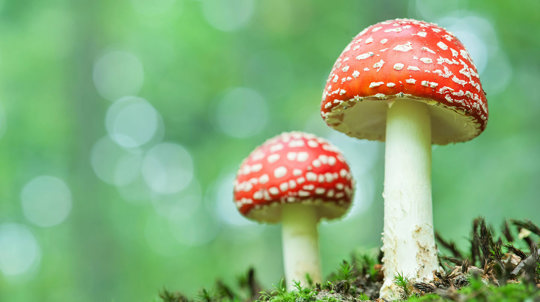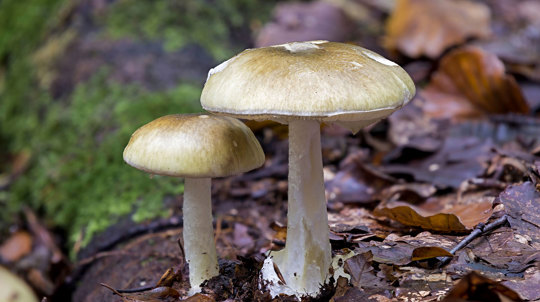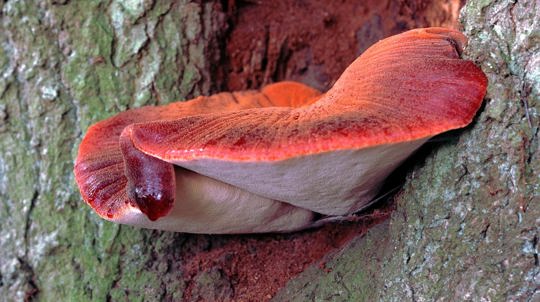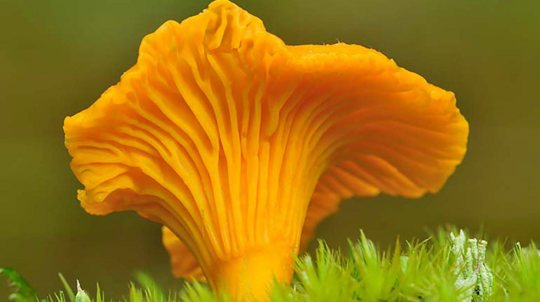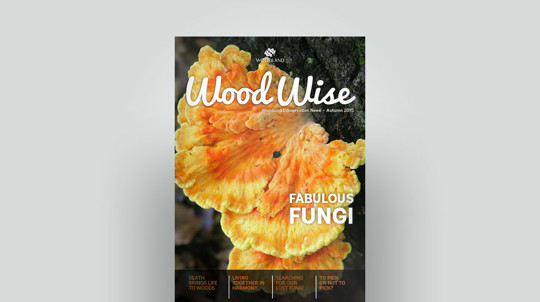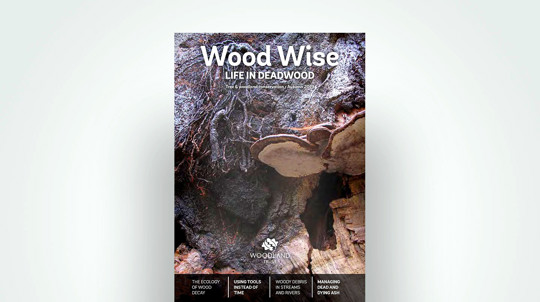This fungus is prized in Japanese cuisine where it is known as maitake, the 'dancing mushroom'.
Bracket fungi identification: 10 common UK species for beginners

Content manager
Bracket fungi, also known as shelf or polypore fungi, grow on the trunks and branches of both dead and living trees. They're generally tough and durable, making them possible to spot year round.
There are a number of species in the UK, some of which can be tricky to tell apart. Here we list a few of the more common and easily distinguished types to get to grips with.
1. Turkeytail (Trametes versicolor)
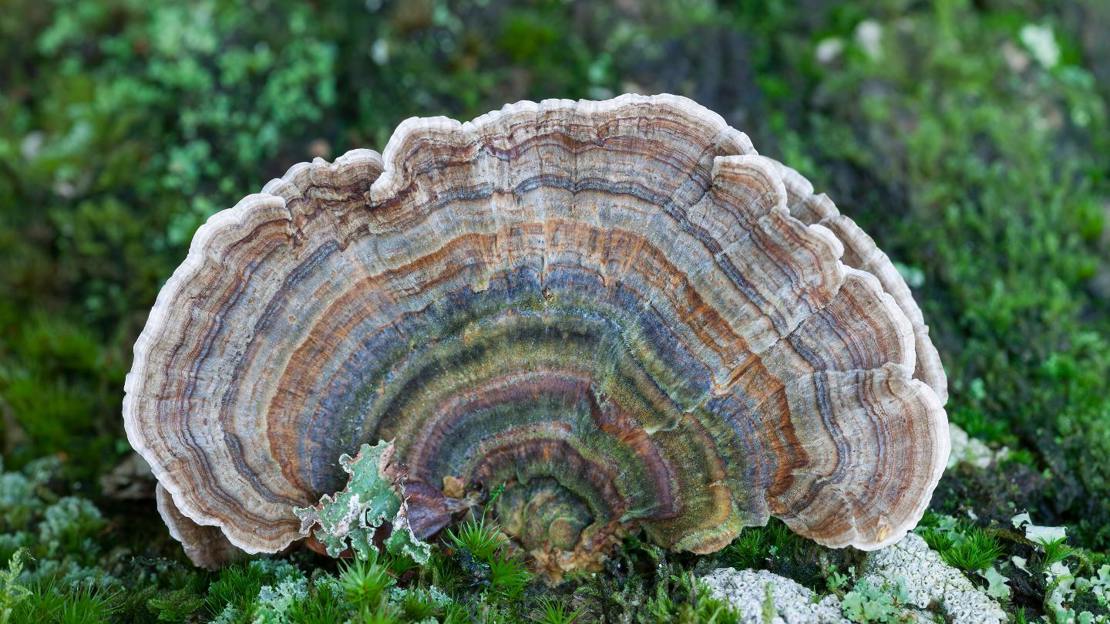
How to identify
These thin, semi-circular brackets can be incredibly colourful when examined up close. Look for concentric striations of different shades and a wavy, creamy edge. Generally found in tiered groups and can sometimes form rosette shapes if growing from a horizontal surface, such as a tree stump.
Size
Up to 10cm across.
Where to find it
Very common and widespread across the UK. Look for turkeytails on both the living and dead wood of deciduous trees.
2. Beefsteak fungus (Fistulina hepatica)
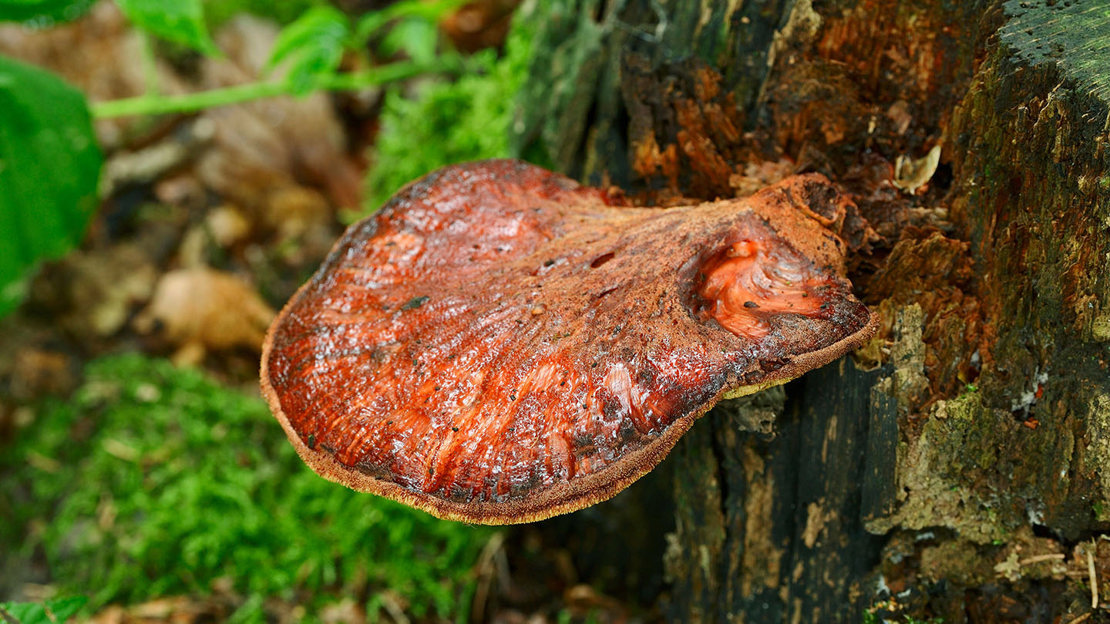
How to identify
This favourite of foragers is so named for its resemblance to a piece of raw meat. The top side is soft and sticky and it can exude blood-like droplets. The succulent flesh is even veined inside. The beefsteak fungus is fairly rounded when fresh but becomes flatter and more tongue-like with age, particularly at the edges.
Size
Up to 25cm across.
Where to find it
Widespread and common across the UK. Usually found on either the living or dead wood of oaks but can grow from other deciduous trees. Best looked for between August and November for fresh fruiting bodies.
3. Chicken of the woods (Laetiporus sulphureus)
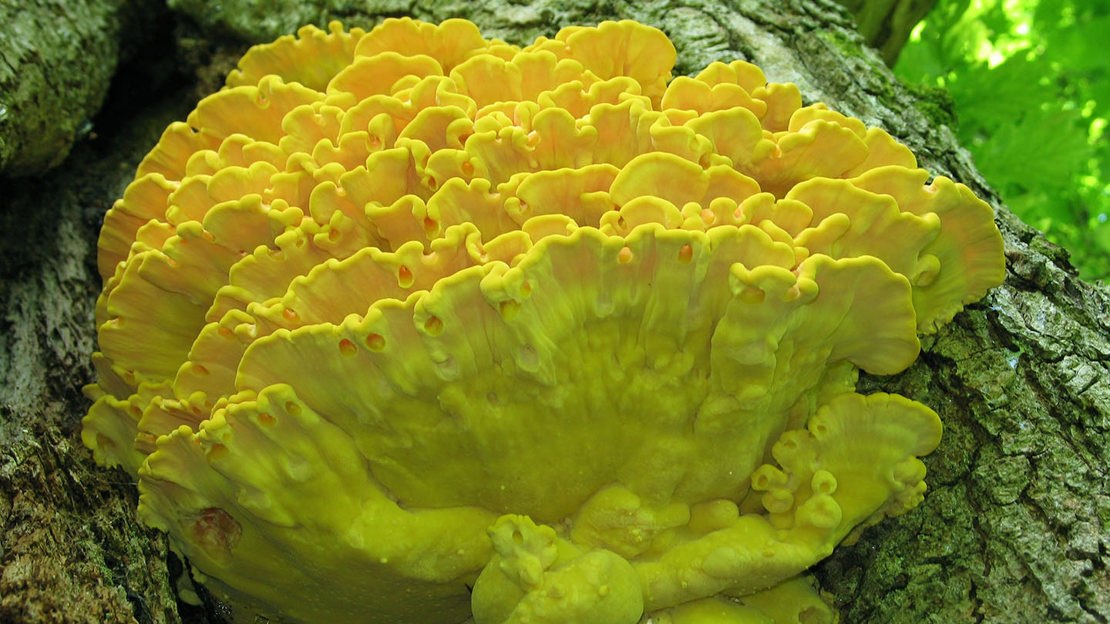
How to identify
Another sought-after species with mushroom connoisseurs, chicken of the woods is bright yellow, sometimes more orange on top than below. Individual brackets are thick and lumpy-looking. Grows in large, overlapping groups. The flesh is often white and chicken-like inside, becoming crumbly with age.
Size
Up to 40cm across.
Where to find it
Common and widespread across the UK. Look for it on the trunks of standing trees, often high up. Common on yew and oak but is also sometimes found on other deciduous trees.
4. Hen of the woods (Grifola frondosa)
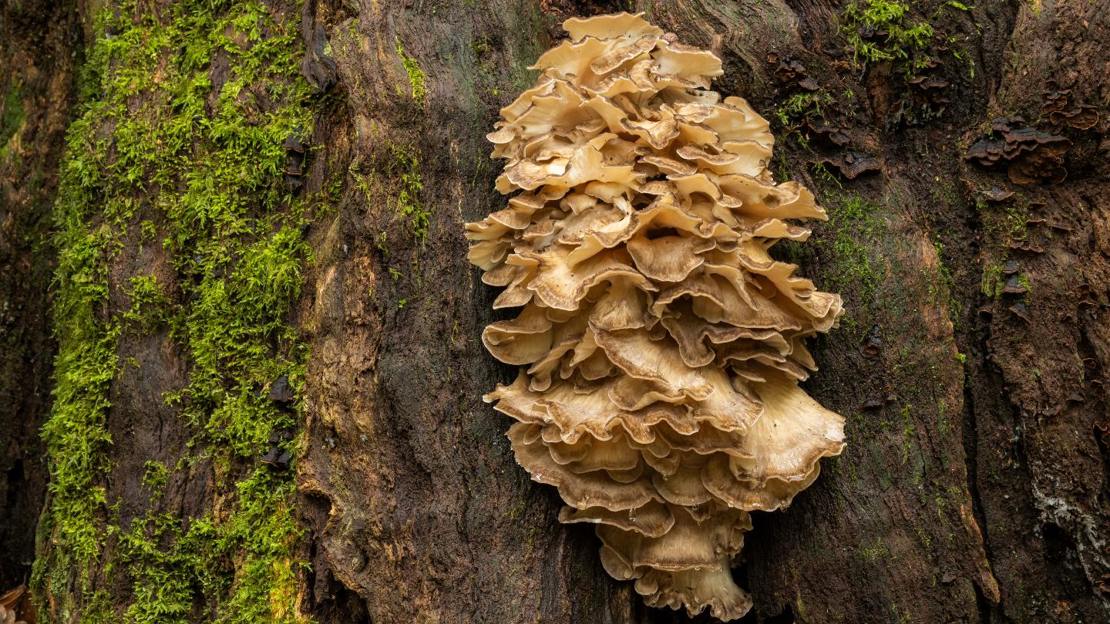
How to identify
Often produces a globe-like profusion of frilly, leafy brackets that are densely packed together. Colour can be tan or greyish brown, becoming darker with age. Unlike some of the other species listed here it is short-lived and best looked for between August and November.
Size
Up to 50cm across.
Where to find it
Relatively uncommon but can been found across the UK. Most likely to be encountered in the south. Usually found around the base of living oak trees but can grow from some other deciduous species.
5. Hoof fungus (Fomes fomentarius)
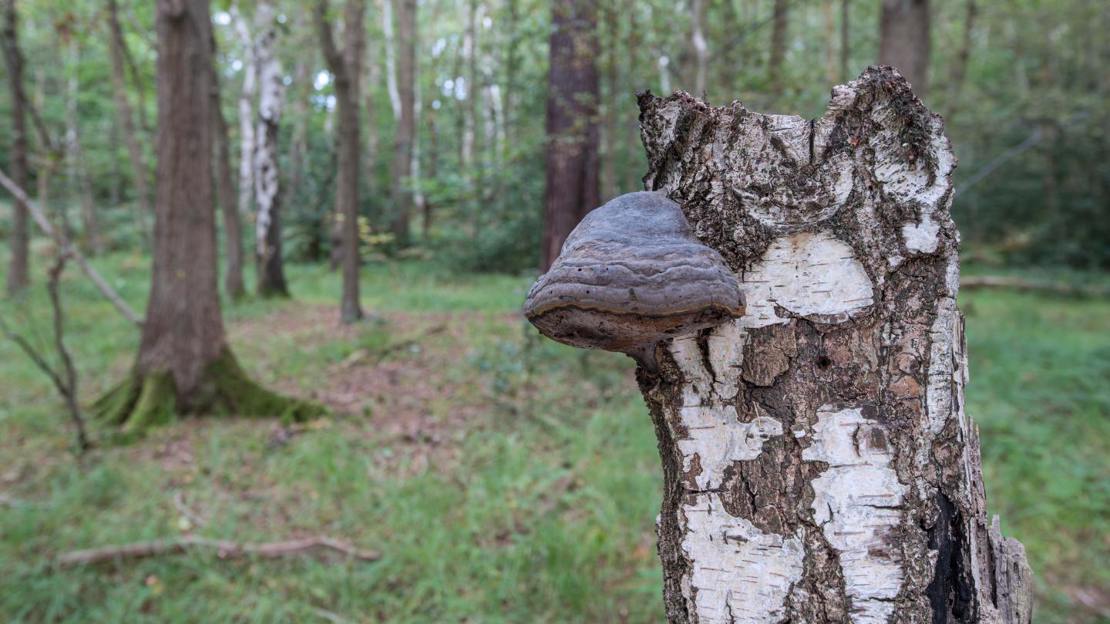
This species is also known as the tinder bracket. It has been used for thousands of years as portable fire lighting material.
How to identify
As the name suggests, this fungus is typically hoof-shaped with a hard, domed upperside, round rim and flat underside. It's usually greyish on top with a lighter underside that becomes browner with age. Growth layers are added over several years and can be white when fresh.
Size
Up to 25cm across.
Where to find it
Common across Scotland but becoming less frequent further south and in Ireland. The species does however seem to be increasing its range, especially in the midlands. Particularly likes dead birches but can be found on other deciduous trees.
6. Dryad's saddle (Polyporus squamosus)
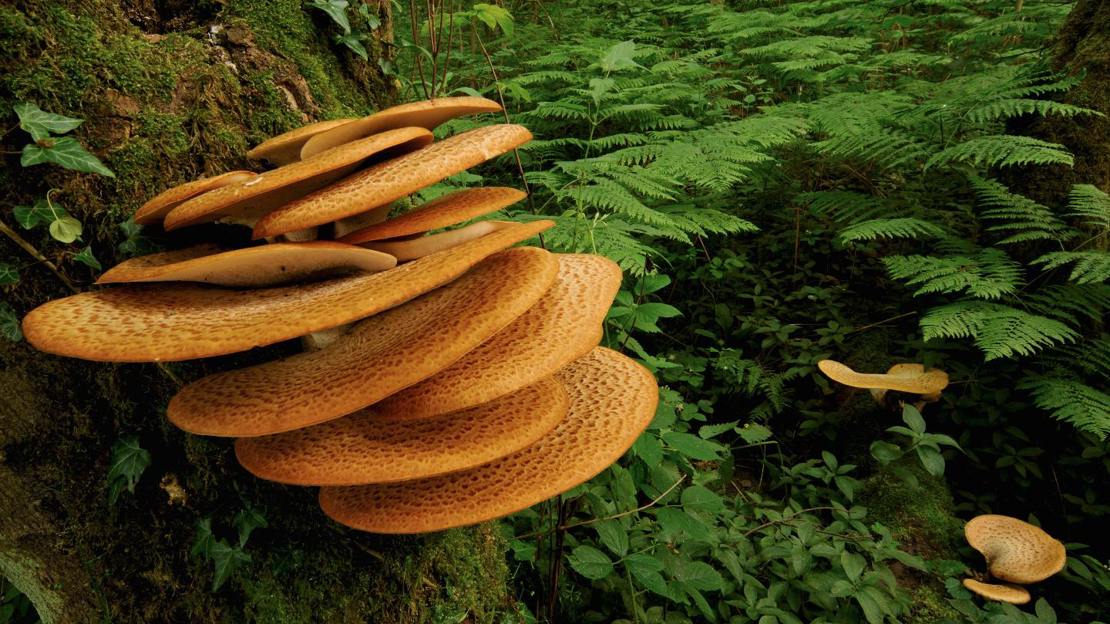
How to identify
A large, almost circular bracket which is usually flat with a slight dip towards where it attaches to the tree with a black-based stem. The upper surface is yellowy brown with dark brown scales. Can appear as single brackets or in tiers.
Size
Up to 60cm across.
Where to find it
Common and widespread across the UK. Can be found growing from a number of deciduous trees. This one doesn't hang around though and is best looked for between April and August.
7. Birch polypore (Fomitopsis betulina)
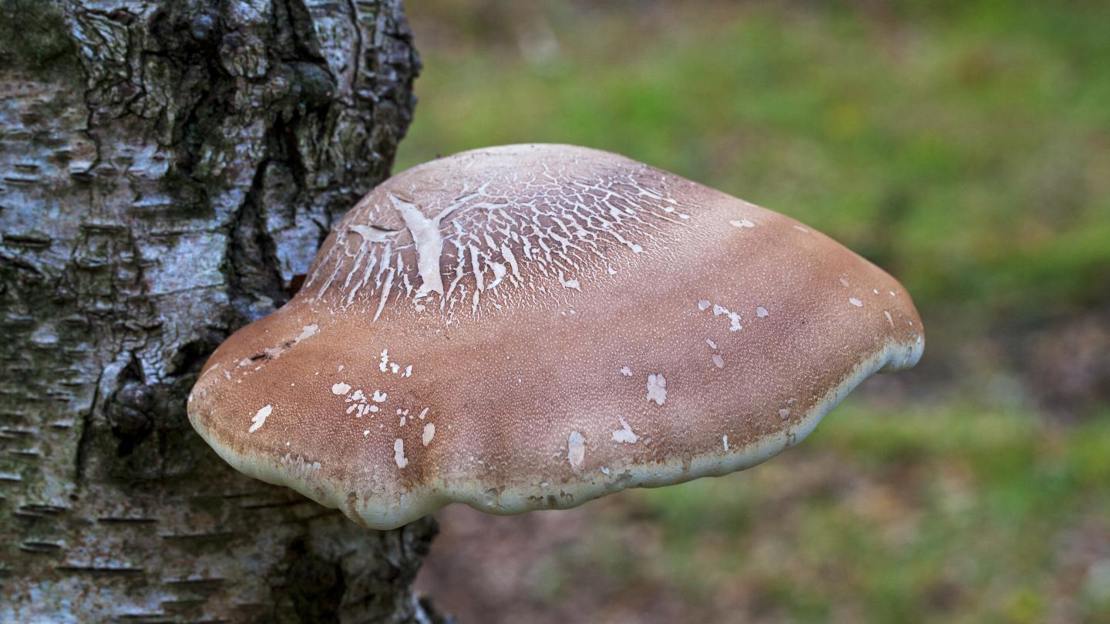
This species is also known as the razorstrop fungus. Barbers used to use dried strips to prepare the blades of their cut throat razors for close shaves.
How to identify
A thick, solitary bracket with a rounded, bulbous shape. It can sometimes be quite hoof-like. The topside is usually cream or greyish brown with a smooth texture. The underside is pale with very small pores.
Size
Up to 30cm across.
Where to find it
One of the UK's most widespread and common brackets. You're almost guaranteed to find this species in any birch wood growing from both living and dead birch trunks.
8. Southern bracket (Ganoderma australe)
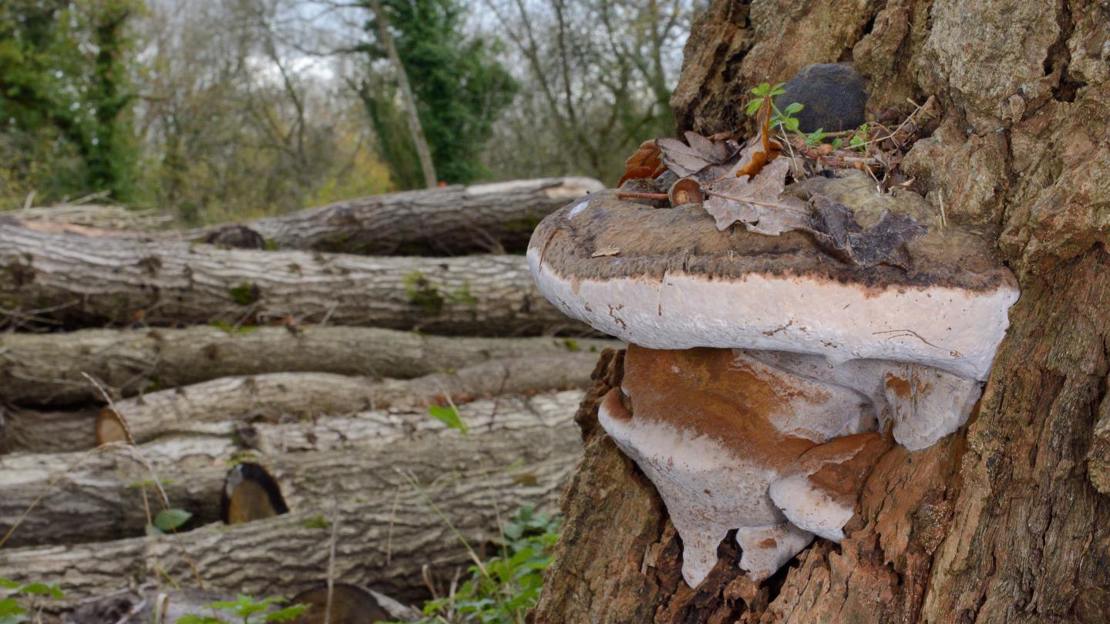
How to identify
This species is your typical thick, large, semi-circular bracket which is also tough and woody. The flat topside can become quite knobbly with concentric ridges and is usually dark brown or reddish. The underside is white and easily scored, allowing drawings to be scratched into its surface. Very similar to artist's bracket (Ganoderma applanatum) which is less common but named for the same canvas-like properties.
Size
Up to 60cm across.
Where to find it
Common and widespread across the UK. Likes to grow from both living and dead beech but can also be found on other deciduous trees.
9. Blushing bracket (Daedaleopsis confragosa)
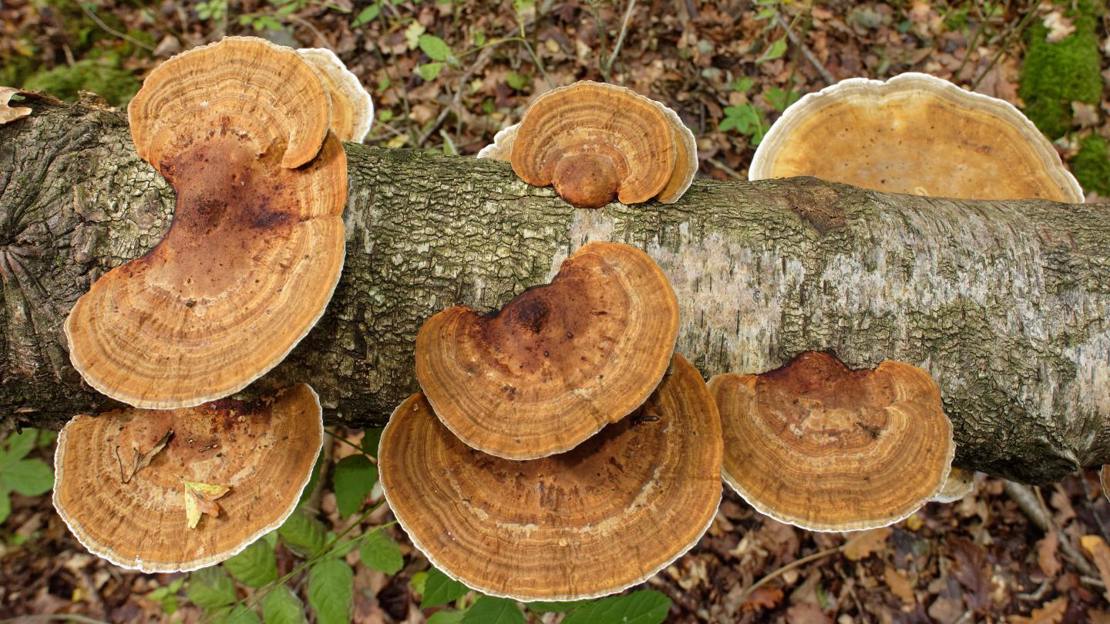
How to identify
A typically fan-shaped bracket with a thin edge. The upperside is tan brown when young with clear concentric rings, turning a much deeper red with age. The species is named for the way its pale underside (patterned with slot-like pores) will bruise pale red if pressed on with a finger. Can appear on its own or in groups.
Size
Up to 20cm across.
Where to find it
Common and widespread across the UK, especially along rivers where willows are found. Grows from dead deciduous trees, particularly willows and birch.
10. Oak mazegill (Daedalea quercina)
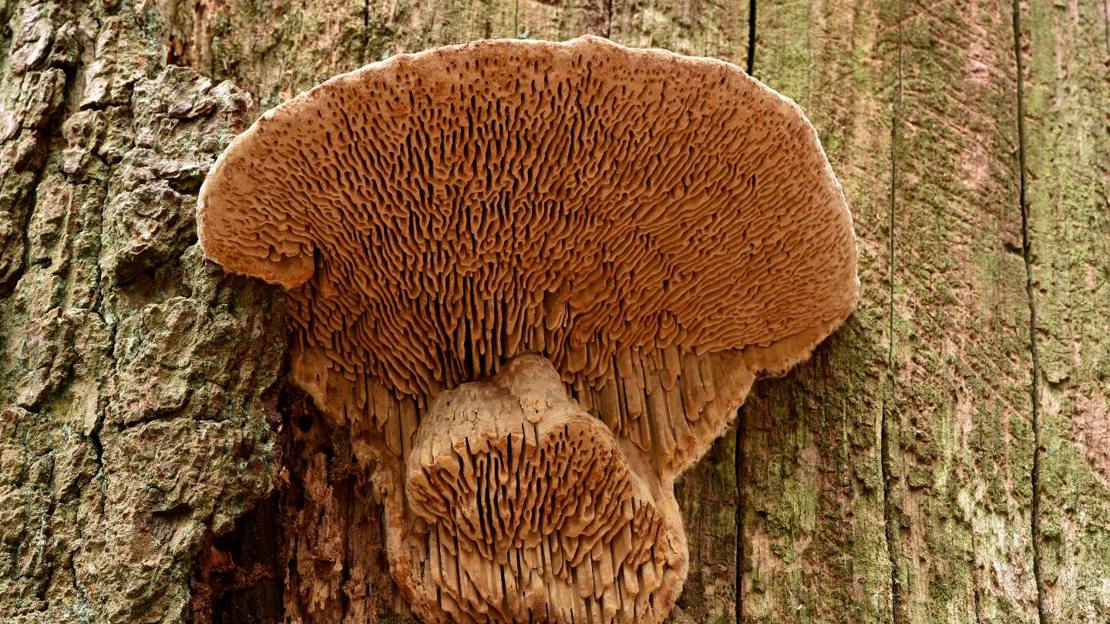
How to identify
A tough and woody bracket, sometimes shaped like an upside-down cone, that is aptly named. The underside is a network of wide, gill-like fissures which branch off into a maze of ridges. The top surface is much less remarkable, usually greyish brown with warty ridges. Not to be confused with other, less chunky mazegills, such as the birch and conifer varieties, which as their names suggest are more likely to be found on the trees they are named after.
Size
Up to 20cm across.
Where to find it
Widespread across the UK but less common than most of the other species on our list. Found growing almost exclusively on the dead wood of oaks, but sometimes also on sweet chestnut.
Identify fungi on the go
Discover fungi when you're out and about with your own pocket-sized identification guide to the UK's common species.
Buy it now

